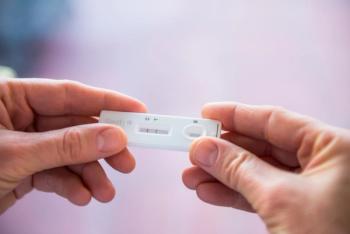
Examining the mental health symptoms of Black or Latinx trans teens
Teenagers who are Black or Latinx as well as transgender face discrimination on 2 different fronts. A report examines whether this leads to a greater mental health burden.
Teenagers who aren’t White or cisgender often experience discrimination from society. An
The investigators used data from the 2015-2017 Biennial California Healthy Kids Survey. The analytic sample included White transgender teenagers, Black and Latinx cisgender teenagers, and Black and Latinx transgender teenagers. The outcomes included looked at past-year depressive symptoms and suicidality. The psychosocial risk factors were gender-based harassment, sexuality-based harassment, race-based harassment, and school-based victimization. Protective factors examined were caring adult relationships and school connectedness.
The sample examined for the study included 19,870 participants, which was made up of 19,424 Black and Latinx cisgender adolescents (weighted percentage, 98.0% [95% CI, 97.8% to 98.2%]), 104 White transgender teenagers (weighted percentage, 0.7% [95% CI, 0.6% to 0.8%]), and 252 Black and Latinx transgender teenagers (weighted percentage, 1.3% [95% CI, 1.1% to 1.5%]). Among the Black and Latinx transgender teenagers, the estimated prevalence of suicidality and depressive symptoms were 46% (95% CI, 39% to 52%) and 50% (95% CI, 44% to 57%), respectively. In models adjusted for living arrangement, grade, and reported sex, when compared to white transgender teenagers, Black and Latinx transgender teenagers had similar odds for suicidality (adjusted odds ratio, 1.1; 95% CI, 0.6 to 1.8) and depressive symptoms (adjusted odds ratio, 0.6; 95% CI, 0.4 to 1.1) as well as similar odds of all forms of harassment (eg, race-based harassment: adjusted odds ratio, 1.5; 95% CI, 0.8 to 2.6). There were also similar levels of victimization and caring relationships between both group, but lower levels of school connectedness for Black and Latinx transgender teenagers. When compared to Black and Latinx cisgender teenagers, Black and Latinx transgender teenagers had higher odds of depressive symptoms (adjusted odds ratio, 2.7; 95% CI, 2.0 to 3.7) and suicidality (adjusted odds ratio, 5.9; 95% CI, 4.3 to 8.0), They also had higher odds and levels of all forms of harassment and victimization. Black and Latinx transgender adolescents had lower levels of protective factors than their Black and Latinx cisgender peers, including caring adult relationships (adjusted linear regression coefficient, −0.9; 95% CI −1.3 to −0.5) and school connectedness (adjusted linear regression coefficient, −2.6; 95% CI −3.3 to −1.8).
Investigators concluded that Latinx and Black transgender teenagers had a high rate of mental health symptoms, which were comparable to their White transgender adolescent peers, but higher than their Black and Latinx cisgender adolescent peers. When developing services and interventions meant to support this group, the unique makeup of psychosocial risks and protective factors should be taken into account.
Reference
1. Vance S, Boyer C, Glidden D, Sevelius J. Mental health and psychosocial risk and protective factors among black and latinx transgender youth compared with peers. JAMA Netw Open. 2021;4(3):e213256. doi:10.1001/jamanetworkopen.2021.3256
Newsletter
Access practical, evidence-based guidance to support better care for our youngest patients. Join our email list for the latest clinical updates.












